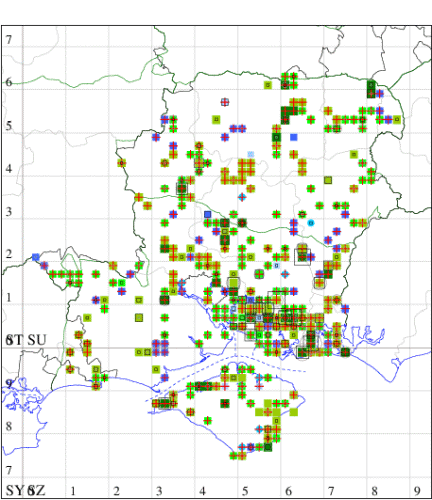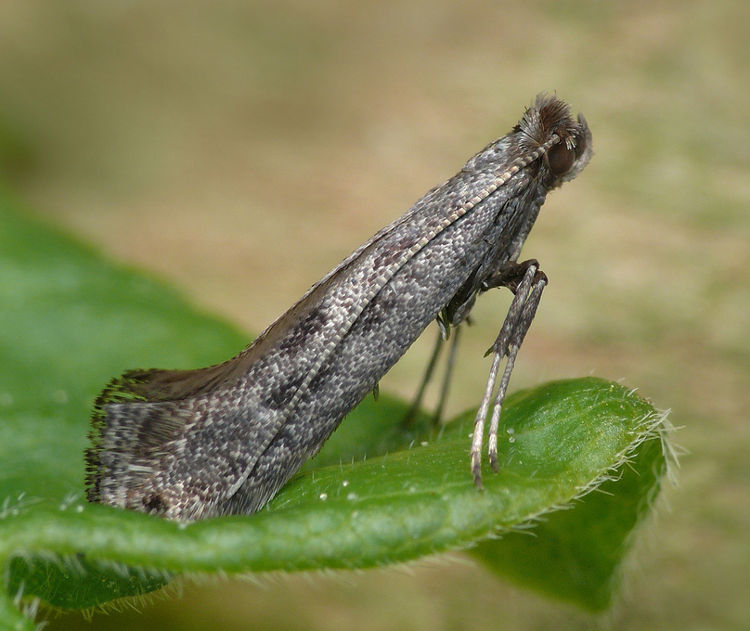Parornix anglicella
Checklist Number15.028 [B&F: 0303]
Verification
Record requires retention of specimen until confirmed, and may require dissection. Consult with CMR if unsure
Classification
| Family: | Gracillariidae |
| Subfamily: | Gracillariinae |
| Genus: | Parornix |
| Species: | anglicella |
| Authority: | (Stainton, 1850) |
Common in gardens, hedgerows and woodland throughout much of the British Isles to Perthshire, north of which it is more local and rare. In Hampshire and on the Isle of Wight common and widespread. Wingspan 9-11 mm. Similar to P devoniella, which has the ground colour paler and the dark markings more distinct and, on the underside, a distinct white line in the terminal cilia which is continued round the apex to unite with the costal strigula nearest the apex; in P. anglicella this line is more obscure and stops at the apex, not reaching the anteapical strigula (MBGBI Vol 2). Easily disturbed from its foodplants, around which it can be found flying from late afternoon, and it occasionally comes to light, but more frequently recorded in the larval stage, when mines are relatively easy to find where they are present. Larva mines leaves of Hawthorn and Wild Service-tree, subsequently living within a leaf-fold, over-wintering as a pupa in a cocoon.


The abundance in each month is indicated as follows:
 No records
No records Very occasional
Very occasional Irregular
Irregular Uncommon
Uncommon Off-peak, but not unusual
Off-peak, but not unusual Off-peak, but not unusual
Off-peak, but not unusual Main flight time
Main flight time| J | F | M | A | M | J | J | A | S | O | N | D | |
|---|---|---|---|---|---|---|---|---|---|---|---|---|
| Adult |  |  |  |  |  |  |  |  |  |  |  |  |
| Larval |  |  |  |  |  |  |  |  |  |  |  |  |

(Mine on Crataegus)(20210904_131700).jpg)
(Mine on Crataegus.jpg)
(Mine on Crataegus (underside).jpg)



